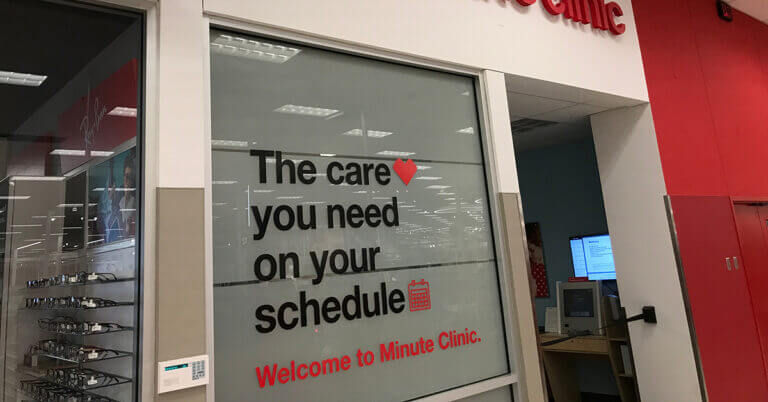March 4, 2021

What Healthcare AI Adoption and the Old Kiddieland Amusement Park Have in Common
Exactly one year ago, I wrote a column called “How Can Healthcare Avoid Screwing Up AI’s Potential?” A lot of stuff has happened over the past year, to put it mildly. So I thought it would be a good idea to revisit the topic and do a status check on what’s happening with AI in healthcare.

Some recent headlines — like this one in the Wall Street Journal “IBM’s Retreat From Watson Highlights Broader AI Struggles in Health” and this one in Stat News “3 lessons from Stanford’s COVID-19 vaccine algorithm debacle” — suggest that humans in healthcare have yet to master artificial intelligence technology in ways that improve how the healthcare system functions and improve medical outcomes for patients.
Let’s look beyond some of these scary headlines and find out where we are with healthcare AI and what we’re doing to, as my 2020 headline asks, not screw up AI’s potential.
A number of reports and surveys indicate that healthcare executives’ optimism over AI’s potential hasn’t waned and, in fact, is growing.
Most Healthcare Organizations Have an AI Strategy
Last October, for example, Optum released the results of its third annual AI in healthcare survey, which you can download here. Optum asked 500 senior healthcare executives working for hospitals, health plans, life sciences and employers about where they were at with AI in 2020. Here are some of the key finding from Optum’s latest survey:
- 98 percent of the respondents said they have an AI strategy in place or are planning to create one. That’s up from 85 percent in 2019.
- 59 percent of the respondents said they expect to achieve a return on their AI investment within three years. That’s up from 50 percent in 2019.
- The four areas where AI will have the greatest impact will be: improving health outcomes (55 percent of the respondents); improving the patient experience (55 percent of the respondents); decreasing per capita cost of care (46 percent of the respondents); and improving provider experience (44 percent of the respondents)
AI Tech Being Used for Clinical Decision Support Most
Also, in October, the Center for Connected Medicine and KLAS Research released their Top of Mind for Health Systems 2021 report, which you can download here. CCM and KLAS asked 117 healthcare executives from 112 health systems what their digital health priorities would be in 2021. Here are some of the key findings from this survey:
- 50 percent of the respondents said their health systems were using AI technology to help them manage their response to the COVID-19 pandemic.
- Clinical decision support was the most common use of AI technology at their health systems, cited by 61 percent of the respondents.
- 70 percent of the respondents said their health systems were buying their AI technology from an outside vendor compared with 9 percent doing it in-house only and 22 percent doing a combination of in-house and out-of-house development and adoption.
Widespread Adoption of Healthcare AI Around the Corner
In November, Black Book Research released the results of a health information management priority survey, which you can download here. Black Book Research asked 540 health information management executives about where they’re at with AI now and where they’re going with AI in the future. Here are some of the key findings from this survey:
- 47 percent of the respondents said their healthcare organization already are using AI “in one form or another.”
- 90 percent of the respondents said they expected widespread implementation of AI. technologies in their healthcare organizations within the next five years.
- 87 percent of the respondents said acquiring AI-powered clinical intelligence for clinical decision support and to improve clinical documentation and data capture is a priority in 2021.
It would appear that algorithm-loving healthcare organizations are accelerating the use of AI technology, based on these three surveys and others.
Amid everyone’s exuberance, what are we doing to make sure AI doesn’t produce unintended consequences? We know it could skew patients’ diagnoses and treatments based on racially biased data or vaccinate attending physicians and board members rather than frontline medical residents, physicians and nurses
A few forward-looking organizations are trying to put up some guardrails to make sure healthcare AI stays on track.
HHS to Foster and Oversee Healthcare AI Adoption
In January, for example, HHS released its healthcare AI strategy, a detailed, eight-page report that you can download here. HHS said its strategic approach to healthcare AI includes the following four responsibilities:
- Regulating and overseeing the use of AI in the health sector.
- Funding programs, grants and research that leverage AI-based solutions to deliver outcomes.
- Collaborating with internal partners, external partners, including academia, the private sector, and state, local, tribal and territorial governments, to enhance programs and services through the potential of AI.
- Identifying gaps and unmet needs in health and scientific areas that would benefit from government involvement and AI application.
To oversee the execution of these four responsibilities and prioritize the agency’s work would be a new HHS AI Council.
FDA Acts to Promote and Improve Algorithms
Also, in January, the Food and Drug Administration released its Artificial Intelligence/Machine Learning-Based Software as a Medical Device Action Plan, which you can download here. The action plan lays out how the FDA intends to regulate AI-based medical software in the future. In the eight-page action plan the FDA says it will do five things:
- Develop the proposed regulatory framework, including through issuance of draft guidance on a predetermined change control plan (for software’s learning over time).
- Support the development of good machine learning practices to evaluate and improve machine learning algorithms.
- Foster a patient-centered approach, including device transparency to users.
- Develop methods to evaluate and improve machine learning algorithm.
- Advance real-world performance monitoring pilots.
“The plan outlines a holistic approach based on total product lifecycle oversight to further the enormous potential that these technologies have to improve patient care while delivering safe and effective software functionality that improves the quality of care that patients receive,” the FDA said.
That’s agency-speak for we’d better keep a closer eye on this healthcare AI thing.
New Standard Seeks to Build Healthcare AI Trust
In February, meanwhile, the Consumer Technology Association released a new “trustworthiness” American National Standards Institute accreditation standard for healthcare AI solutions, which you can download here. More than 60 organizations support the new standard, including many healthcare groups like America’s Health Insurance Plans, the Duke Margolis Center for Health Policy, the Federation of State Medical Boards and the Joint Commission.
The 31-page standard identifies the “core requirements and baseline for AI solutions in health care to be deemed as trustworthy” in three areas:
- Human trust, which focuses on factors that build trust between the user and the developer like the AI solution being easily explained, easy to use and creating a positive experience.
- Technical trust, which focuses on factors such as technical design, technical reliability, data quality, data integrity, data bias and data privacy and security.
- Regulatory trust, which focuses on factors related to accreditation, standards, statutes, regulations and regulatory approvals and compliance.
“As the U.S. health care system faces clinician shortages, chronic conditions and a deadly pandemic, it’s critical patients and health care professionals trust how these tools are developed and their intended uses,” the CTA said.
Slow and Steady Wins the Healthcare AI Race
 This reminds me of the tractor ride at the old Kiddieland amusement park in Melrose Park, Ill, which opened in 1929 and closed in 2009. Little kids, including myself at the time, could drive a gas-powered mini tractor complete with a steering wheel and an accelerator. But to avoid hitting the tractor in front of you, you could only go so fast. And you couldn’t steer off the track because there were two parallel guardrails hemming you in around the entire track that stopped you from turning too far left or right.
This reminds me of the tractor ride at the old Kiddieland amusement park in Melrose Park, Ill, which opened in 1929 and closed in 2009. Little kids, including myself at the time, could drive a gas-powered mini tractor complete with a steering wheel and an accelerator. But to avoid hitting the tractor in front of you, you could only go so fast. And you couldn’t steer off the track because there were two parallel guardrails hemming you in around the entire track that stopped you from turning too far left or right.
None of us realized it at the time, of course. We were too busy wildly turning the wheel left and right while our parents took our picture. We were driving!
This is where healthcare AI needs to be today. It has all the potential in the world to improve how the healthcare system functions and to improve patient outcomes. But to get to the end of the ride safely, someone needs to monitor speed of adoption and make sure it’s not turning the wrong way.
Thanks for reading.
Stay home. Stay safe. Stay alive. The vaccine is coming. Really. Eventually.





